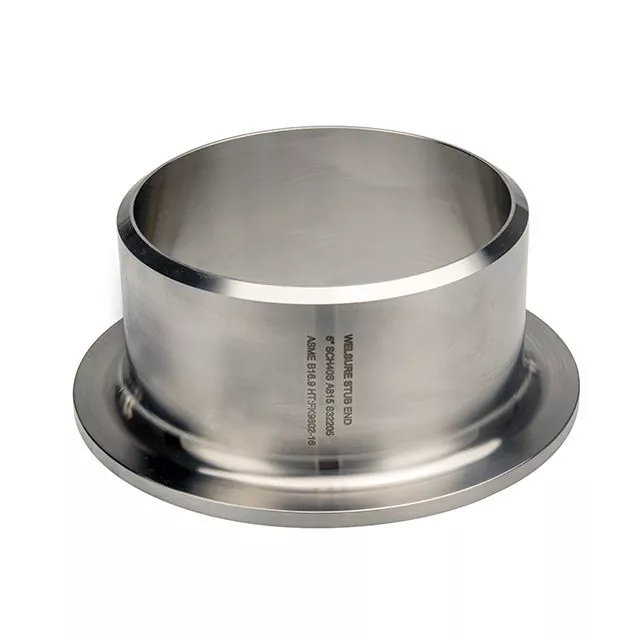A Comprehensive Guide to Stainless Steel Stub End Pipe Fittings
2025-02-08
Pipe fittings play a crucial role in modern piping systems, ensuring proper connectivity, flexibility, and efficiency in fluid transport. Among the various types of fittings, stainless steel stub end pipe fittings stand out for their durability and practicality. In this blog, we will explore what stub end fittings are, their benefits, and where they are commonly used.
What is a Stainless Steel Stub End?
A stub end is a short pipe piece with a flared end that works alongside a lap joint flange to create a reliable connection between pipes. Unlike conventional flanges, a stub end allows the flange to rotate freely, which facilitates easier alignment and installation.
These fittings are typically made from stainless steel, which provides excellent resistance to corrosion, making them suitable for harsh environments, including chemical, marine, and food processing industries.
Benefits of Stainless Steel Stub Ends
1. Corrosion Resistance: Stainless steel prevents rust and corrosion, ensuring longevity in harsh environments.
2. Cost-Effective Solution: Since the stub end and flange can be separated, it reduces the need for full-flange replacements, saving costs.
3. Ease of Installation & Maintenance: The free rotation of the lap joint flange simplifies alignment and makes maintenance more convenient.
4. Versatility: Stub ends are available in different stainless steel grades, such as 304, 316, and 321, catering to various industrial needs.
5. Reduced Wear & Tear: The stub end takes most of the mechanical stress, prolonging the lifespan of the piping system.
Types of Stainless Steel Stub Ends
Stub ends are classified based on their manufacturing design and length. The two main types include:
- Type A Stub End: Designed to be used with lap joint flanges, offering a smooth transition and better sealing.
- Type B Stub End: Suitable for use with standard slip-on flanges, typically found in high-pressure applications.
Common Applications of Stub Ends
Stainless steel stub ends are widely used in various industries, including:
- Oil & Gas Pipelines: For fluid transport in offshore and onshore environments.
- Chemical Processing: Ensuring chemical resistance and safety.
- Food & Beverage Industry: Hygienic properties make stainless steel ideal for food processing lines.
- Pharmaceutical Industry: Used in sterile environments for transporting liquids and gases.
- Water Treatment Plants: Ensuring clean and corrosion-resistant water supply.
How to Choose the Right Stainless Steel Stub End
When selecting a stub end, consider the following factors:
- Material Grade: Choose 304 stainless steel for general applications or 316 stainless steel for enhanced corrosion resistance.
- Pipe Size & Schedule: Ensure compatibility with your piping system.
- End Finish: Smooth or serrated surfaces affect the sealing performance.
- Operating Conditions: Consider temperature, pressure, and exposure to chemicals.
Stainless steel stub end pipe fittings offer a highly efficient and cost-effective solution for various piping systems. Their ability to reduce flange wear, ease installation, and resist corrosion makes them a preferred choice across industries. When choosing a stub end, ensure it meets your specific requirements for optimal performance and longevity.



